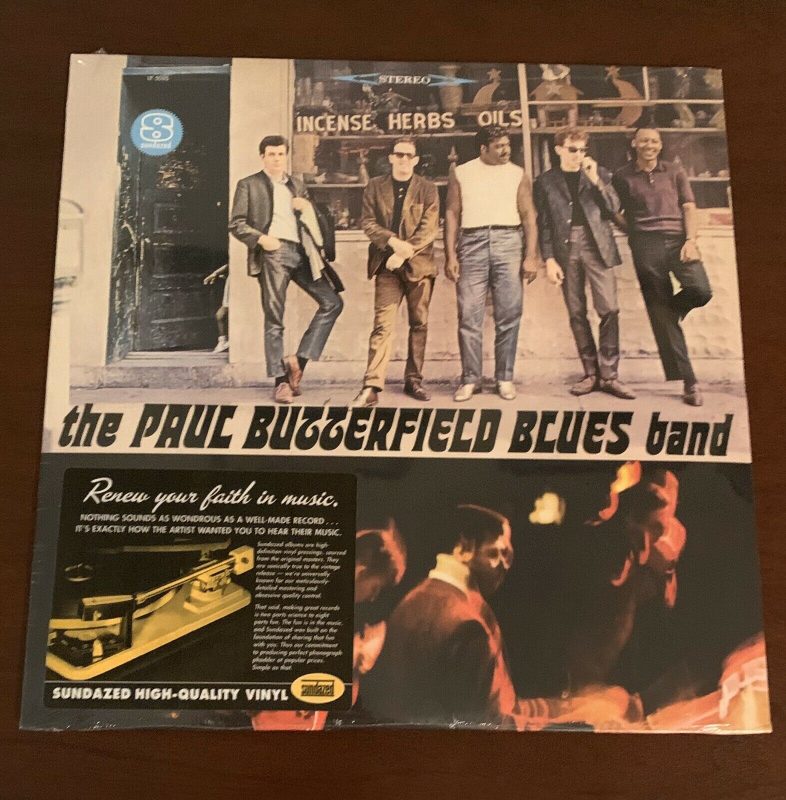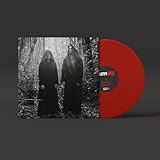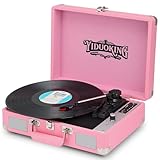Paul Butterfield Blues Band Vinyl Records Lps For Sale
Check out these new and used Paul Butterfield Blues Band vinyl records LPs for sale. We recommend starting your Paul Butterfield Blues Band vinyl collection with the essential albums The Paul Butterfiled Blues Band Live 1970, Golden Butter and In My Own Dream. Our inventory is always changing, so check back often, or browse our list of vinyl records for sale from blues musicians.
Auto Amazon Links: No products found. No products found.

In the tumultuous and transformative era of the 1960s, the Paul Butterfield Blues Band emerged as a powerful force, reshaping the landscape of blues music. Led by the charismatic and harmonica virtuoso Paul Butterfield, the band exploded onto the scene with a dynamic fusion of traditional blues roots and electrifying rock elements. This is the story of a musical journey that sparked a blues revolution and left an indelible mark on the history of American music.
The Early Years of Paul Butterfield:
Paul Butterfield, born on December 17, 1942, in Chicago, Illinois, was immersed in the city’s rich blues culture from a young age. Growing up in a neighborhood where blues legends like Muddy Waters and Howlin’ Wolf were regular performers, Butterfield found himself drawn to the raw, emotional power of the blues.
Butterfield’s introduction to the harmonica, often referred to as the harp in blues circles, became a defining moment. Under the mentorship of blues harmonica maestro Big Walter Horton, Paul honed his skills, developing a unique style that blended traditional blues phrasing with a contemporary edge.
The Formation of the Band:
In 1963, Paul Butterfield decided to form his own band, assembling a lineup that would become the nucleus of the Paul Butterfield Blues Band. Joining forces with guitarist Mike Bloomfield, a fiery and technically adept player, the duo set the stage for a musical partnership that would define the band’s sound.
Completing the lineup were Elvin Bishop on guitar, Mark Naftalin on keyboards, Jerome Arnold on bass, and Sam Lay on drums. This multi-talented ensemble brought together diverse musical influences, creating a blend of blues, rock, and soul that was both groundbreaking and revolutionary.
The Breakthrough at Newport:
The Paul Butterfield Blues Band garnered early attention through their electrifying performances at various Chicago blues clubs. However, it was their breakthrough performance at the Newport Folk Festival in 1965 that propelled them into the national spotlight. This was a defining moment for the band, as they bridged the gap between traditional acoustic blues and the burgeoning electric sound of the ’60s.
The Newport audience, accustomed to acoustic blues, was initially taken aback by the band’s amplified, high-energy approach. However, the raw intensity and passion of Butterfield’s harmonica playing, combined with Bloomfield’s searing guitar work, won over the crowd and established the band as a force to be reckoned with.
The Self-Titled Debut Album:
Building on the momentum gained at Newport, the Paul Butterfield Blues Band released their self-titled debut album in 1965. The record showcased their ability to interpret classic blues tunes with authenticity while injecting a newfound energy into the genre. Notable tracks like “Born in Chicago” and “Shake Your Money-Maker” became anthems of the burgeoning blues-rock movement.
What set the band apart was their commitment to preserving the essence of the blues while pushing boundaries with bold experimentation. Butterfield’s harp playing was a revelation, often taking center stage with its expressive wails and moans, while Bloomfield’s guitar solos added a rock ‘n’ roll edge that resonated with a younger, broader audience.
Expanding Musical Horizons:
As the ’60s progressed, the Paul Butterfield Blues Band continued to evolve. Their second album, “East-West” (1966), marked a departure from traditional blues structures. Clocking in at over 13 minutes, the title track was a groundbreaking exploration of modal improvisation, incorporating elements of Indian raga and psychedelic rock.
“East-West” showcased the band’s willingness to stretch the boundaries of blues music, paving the way for the fusion and experimentation that would characterize the later years of the decade. The album was a testament to their musical versatility, cementing their status as innovators within the blues genre.
Collaborations and Influences:
The band’s reputation attracted collaborations with some of the era’s most influential musicians. Their work with Bob Dylan, particularly during his electric period, further solidified their place in the evolving landscape of American music. The blending of Dylan’s folk lyricism with the Butterfield Band’s electric blues sound demonstrated the interconnectedness of seemingly disparate genres.
Paul Butterfield’s collaboration with blues legend B.B. King on the album “Live at the Fillmore Auditorium” showcased a meeting of two generations of blues giants. This collaboration not only highlighted Butterfield’s respect for the blues tradition but also demonstrated his ability to seamlessly integrate with the luminaries who paved the way.
Personal and Professional Challenges:
Despite their musical successes, the Paul Butterfield Blues Band faced internal tensions and external pressures. Lineup changes occurred, with members coming and going, reflecting the challenges that many bands experienced during this transformative period in music history.
Additionally, the band’s pioneering fusion of blues and rock faced criticism from purists who viewed the electrification of the blues as a departure from its roots. Nevertheless, Paul Butterfield remained undeterred, seeing the integration of different styles as a natural evolution of the music he loved.
Later Years and Legacy:
As the ’60s drew to a close, so did the original lineup of the Paul Butterfield Blues Band. Changes in personnel, coupled with shifting musical trends, led to the band’s eventual disbandment. However, the impact of their contributions resonated far beyond their active years.
Paul Butterfield continued to explore various musical avenues, collaborating with artists from different genres. Tragically, he faced personal struggles with substance abuse, and on May 4, 1987, he passed away at the age of 44. His untimely death marked the end of a chapter in blues history, but the legacy of the Paul Butterfield Blues Band endured.
The band’s influence can be heard in the work of subsequent generations of musicians who embraced the blues-rock fusion. The Rolling Stones, Eric Clapton, and countless others acknowledged the pivotal role played by the Paul Butterfield Blues Band in expanding the boundaries of blues music.
Conclusion:
The Paul Butterfield Blues Band stands as a testament to the transformative power of music during a pivotal era in American history. Their willingness to push boundaries and challenge established norms helped redefine the blues genre, paving the way for future generations of musicians. Paul Butterfield’s harmonica virtuosity and the band’s innovative approach continue to echo through the corridors of blues and rock, reminding us of their enduring impact on the sonic landscape of the 1960s. The explosion they created was not just a musical one; it was a cultural phenomenon that reverberated through the soul of American music.
PAUL BUTTERFIELD BLUES BAND "Sometimes I Just Feel Like Smilin' " LP 1971
 | $38.95 Buy It on eBay for only: $38.95 Buy It Now on eBay |
The Paul Butterfield Blues Band - The Paul Butterfield Blues Band (LP) (Very Goo
 | $14.80 Buy It on eBay for only: $14.80 Buy It Now on eBay |
Paul Butterfield - Paul Butterfield Blues Band [New Vinyl LP] 180 Gram
 | $33.81 Buy It on eBay for only: $33.81 Buy It Now on eBay |
LOVIN' SPOONFUL/PAUL BUTTERFIELD BLUES BAND What's Shakin' ELEKTRA LP c
 | $8.00 End Date: Monday Dec-22-2025 06:51:11 EST Buy It on eBay for only: $8.00 Buy It Now on eBay |
PAUL BUTTERFIELD BLUES BAND - Self Titled Vinyl LP Elektra Bloomfield
 | $24.99 Buy It on eBay for only: $24.99 Buy It Now on eBay |
THE PAUL BUTTERFIELD BLUES BAND LP MONARCH LABEL. EKS 7294
 | $24.99 Buy It on eBay for only: $24.99 Buy It Now on eBay |
The Paul Butterfield Blues Band (Lp Edsel ED 150 UK Import)
 | $19.99 Buy It on eBay for only: $19.99 Buy It Now on eBay |
The Paul Butterfield Blues Band - The Paul Butterfield Blues Band Original
 | $13.99 Buy It on eBay for only: $13.99 Buy It Now on eBay |
Paul Butterfield Blues Band East West LP Vinyl Album Record Rock Funk / Soul
 | $4.72 Buy It on eBay for only: $4.72 Buy It Now on eBay |
PAUL BUTTERFIELD BLUES BAND: RESURRECTION OF PIGBOY CRABSHOW; ELEKTRA VG++ LP
 | $9.99 End Date: Tuesday Dec-23-2025 10:50:32 EST Buy It on eBay for only: $9.99 Buy It Now on eBay |
the paul butterfield blues band LP
 | $14.00 Buy It on eBay for only: $14.00 Buy It Now on eBay |
Paul Butterfield Blues Band- Sometimes I Just Feel Like Smilin LP 1971 vinyl VG+
 | $6.00 Buy It on eBay for only: $6.00 Buy It Now on eBay |
Butterfield Blues Band Live Vinyl 2 LP Elektra VG+/VG
 | $15.00 Buy It on eBay for only: $15.00 Buy It Now on eBay |
The Paul Butterfield Blues Band:Golden Butter Double LP 1972 Gatefold Comp Nice
 | $32.00 Buy It on eBay for only: $32.00 Buy It Now on eBay |
The Paul Butterfield Blues Band. Titled Golden Butter.
 | $31.50 Buy It on eBay for only: $31.50 Buy It Now on eBay |
PAUL BUTTERFIELD BLUES BAND EAST & WEST ELEKTRA SJET8071 Japan VINYL LP
 | $5.99 End Date: Sunday Dec-21-2025 16:45:00 EST Buy It on eBay for only: $5.99 Buy It Now on eBay |
Vintage 1965 the Paul Butterfield Blues band Vinyl Record
 | $31.99 Buy It on eBay for only: $31.99 Buy It Now on eBay |
Paul Butterfield Blues Band S/T LP Elektra EKS 7294 Gold Label
 | $14.99 Buy It on eBay for only: $14.99 Buy It Now on eBay |
PAUL BUTTERFIELD BLUES BAND Golden Butter ELEKTRA 2XLP VG+ matte gatefold
 | $22.50 Buy It on eBay for only: $22.50 Buy It Now on eBay |
The Paul Butterfield Blues Band – In My Own Dream, 1968 LP Elektra EKS-74025
 | $12.00 Buy It on eBay for only: $12.00 Buy It Now on eBay |

![The Life of a Showgirl[Sweat & Vanilla Perfume Orange Glitter Vinyl] #1](https://m.media-amazon.com/images/I/51SJhJbv35L._SL100_.jpg)
![The Life of a Showgirl[Sweat & Vanilla Perfume Orange Glitter Vinyl] #2](https://m.media-amazon.com/images/I/5198D2rwyNL._SL100_.jpg)


![Merry Christmas II You [15th Anniversary Shiny Starlight LP] [Amazon Exclusive] #1](https://m.media-amazon.com/images/I/51MOyCwkOzL._SL100_.jpg)

![Currents [2 LP] #1](https://m.media-amazon.com/images/I/61zjlISscDL._SL100_.jpg)
![Currents [2 LP] #2](https://m.media-amazon.com/images/I/51ETyCkBSyL._SL100_.jpg)













![[Exquisite Appearance] Built from wood and metal materials with a unique sense of layering; The streamlined corner design is truly atmospheric and stylish(Note: long hold the start button to turn the power on, and press again to start) [All in 1] Thi...](https://m.media-amazon.com/images/I/41vovGjFkeL._SL160_.jpg)





































